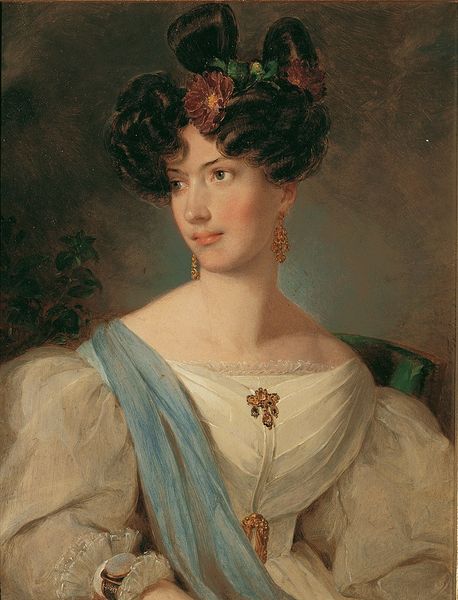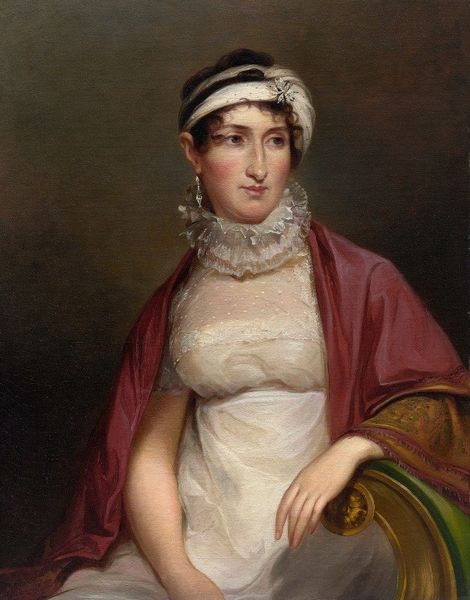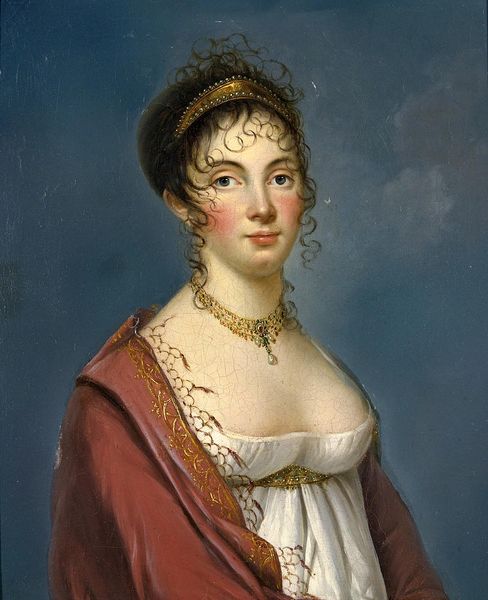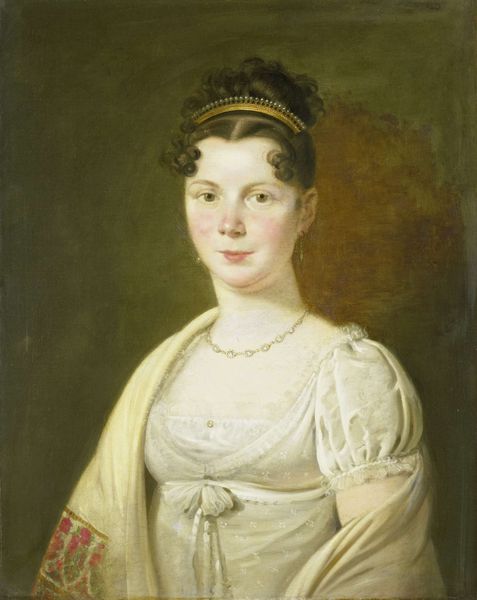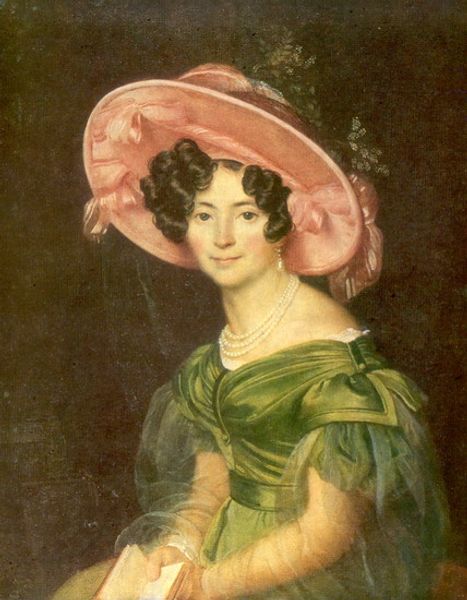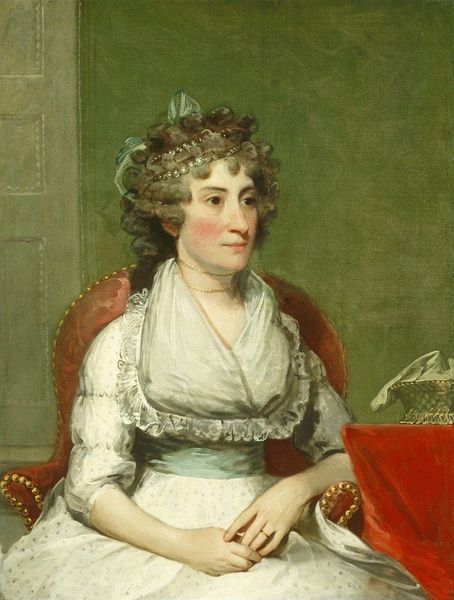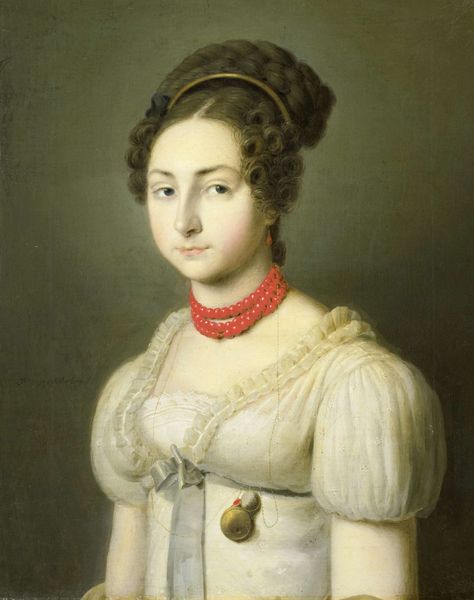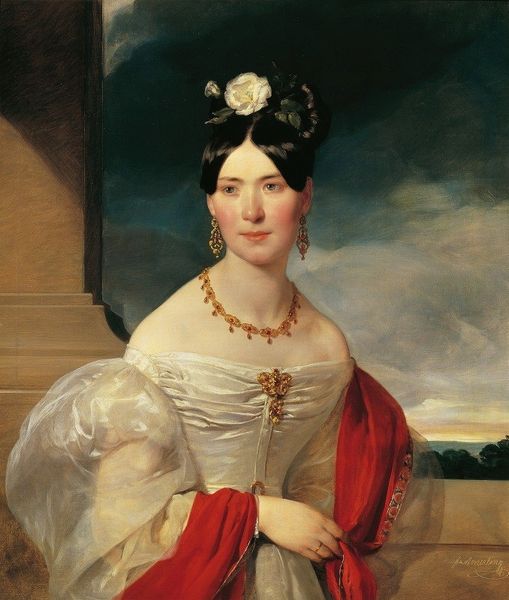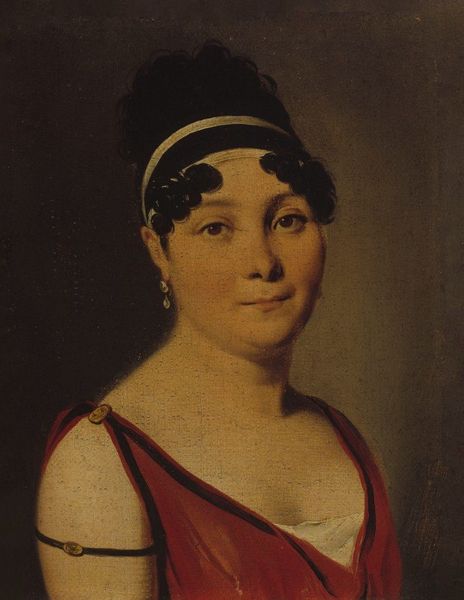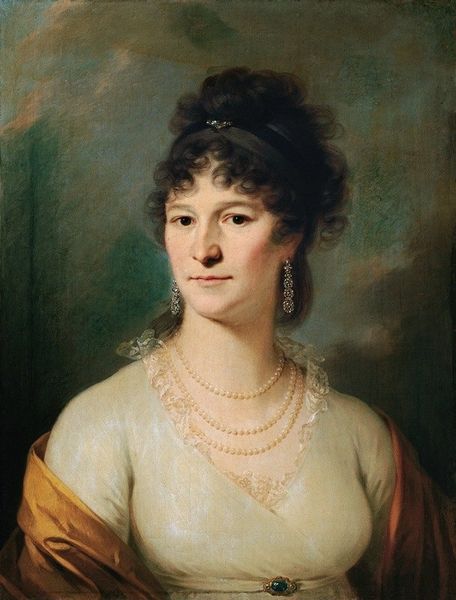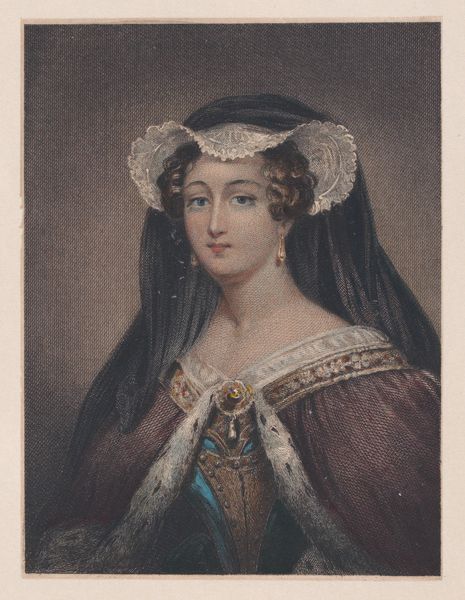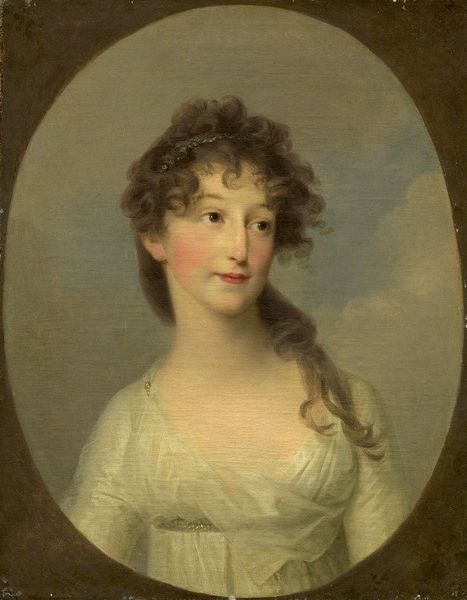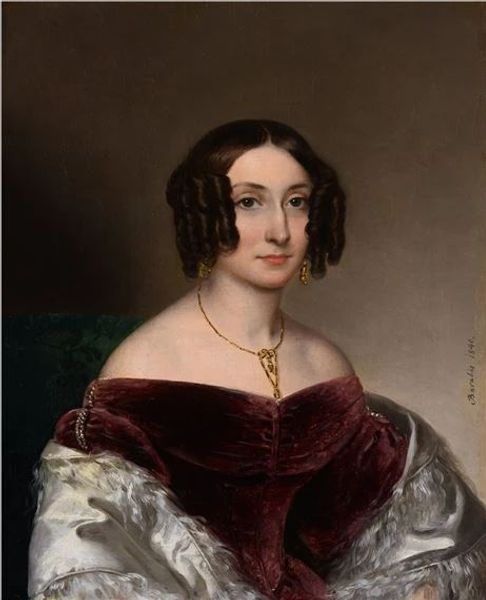
painting, oil-paint
#
portrait
#
portrait
#
painting
#
oil-paint
#
figuration
#
romanticism
#
academic-art
Copyright: Public domain
Curator: So, before us, we have "Portrait of a Woman" by Miklos Barabas, created in 1831. The piece is rendered in oil paint and very much subscribes to a romantic sensibility. Editor: Right. She looks a bit like she’s wandered in from a Jane Austen novel – poised, but with this underlying air of… melancholy, almost. The softness of the palette certainly contributes to that. Curator: The use of oil paint is essential to consider in this kind of portraiture. It enabled a specific luminosity and blending that suited the aspirations of portraiture at this time: realism mixed with idealisation, an appeal to a specific social class and their aspirations of upward mobility, which artists, such as Barabas, facilitated. Editor: I can't help but zoom in on her dress! Those sleeves are just clouds of fabric. There's something decadent about that kind of detail and, you know, all those gemstones. Is that how wealth talked back then? Subtlety and opulence intertwined? Curator: Well, it certainly speaks to an elite class. Consider that the subject's pose and dress require assistance, labour. This points to an entire system of support and, indeed, conspicuous consumption that went hand in hand with maintaining this carefully constructed image. Furthermore, one has to consider the social dynamics at play. Editor: True! There’s also the element of personal narrative being displayed in this picture. How much can an image truly capture about someone, in those days and today? And did that image require a specific performative effort from her side during the process of creating the piece, or by Barabas, the artist? It certainly suggests the limitations that the sitter had at the time to define their public self! Curator: Absolutely, the performance aspect is essential. Both the subject and artist collaborate within these parameters. Ultimately it's a social transaction. Editor: Which makes me wonder, if we could step into that painting for a minute, what stories would she whisper? Not the polite nothings she’d be expected to say, but the real thoughts, the hidden feelings… That’s where art lives for me, in those imagined realities behind the surfaces. Curator: Perhaps what we take away then, is that the surfaces, the visible textures and colours, are very often underpinned by tangible processes of exchange and performance, and those histories still subtly speak to us, even now.
Comments
No comments
Be the first to comment and join the conversation on the ultimate creative platform.
